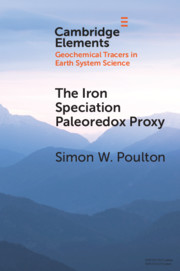The mechanism of formation of detrital, beidellite-rich clay occurring in the Agadir basin (Morocco) is well documented, but its detailed characterization is incomplete which limits its application. The aim of the present study was to provide further details of the mineralogical and physico-chemical characteristics of this clay. Bulk raw clay and its Na+-saturated, <2 μm fraction were characterized using chemical, structural, and thermal techniques. Measurements of induced streaming potential (e.g. particle charge) and of specific surface area and porous volume are reported. The raw clay contained carbonate and quartz as associated minerals along with phyllosilicates (<2 μm particle size). X-ray diffraction and scanning electron microscopy analyses showed that the <2 μm fraction was dominated by a dioctahedral smectite. Because dehydroxylation of this mineral occurred at 510°C, and because it re-expanded in ethylene glycol after Li+-saturation followed by heating at 240°C for 24 h, the mineral was shown to be a beidellite rather than montmorillonite. This assertion was further supported by 27Al and 29Si magic-angle spinning nuclear magnetic resonance spectra showing predominantly negative charges in the tetrahedral sheets due to notable Al-for-Si substitutions. The chemical composition of the <2 μm fraction showed an Fe2O3 content which was ~7.52 wt.% greater than those of other beidellite occurrences but not so much that it would be identified as a nontronite. The absence of stretching and bending absorption bands corresponding to characteristic (Fe2OH) units in mid-infrared spectra and their corresponding fundamental overtones or combination bands in near-infrared spectra supported this notion. The structural formula of the beidellite in the present study was determined to be (Si7.51Al0.49)(Al2.99Fe0.68Mg0.33) (Ca0.03Na0.54Mg0.11)O20(OH)4, having dioctahedral ferruginous characteristics with almost 60% of the negative charge found in tetrahedral sheets. The cation exchange capacity determined from the structural formula was ~108 meq/100 g. The specific surface area and total pore volume were ~82.2 m2/g and 0.136 cm3/g, respectively. Interestingly, a detrital rather than a hydrothermal-alteration origin, as reported for other beidellite occurrences, explains its natural abundance and emphasizes the great interest in it.


